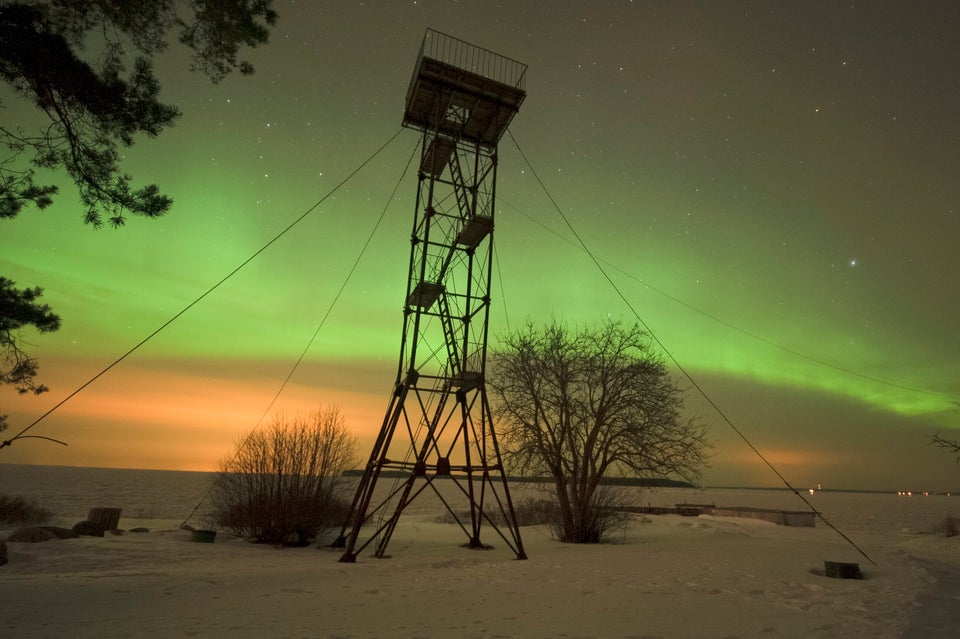On Sunday night, some lucky people in parts of the United Kingdom and Germany were treated to a rare sighting of the northern lights.
The lights, also known as polar aurorae, appear when particles from the sun enter the Earth's atmosphere near the magnetic poles of the Northern and Southern hemispheres, colliding with oxygen and nitrogen particles that emit a range of light as a result.
The colors of the aurorae depend on the types of gas particles involved and the altitude at which the reaction occurs. Oxygen reactions emit greenish-yellow aurorae at lower altitudes, as can be seen in the time-lapse video above, and red aurorae at higher altitudes. Nitrogen gives off blue lights at lower altitudes and purple at higher altitudes.
Polar aurorae are most often visible in regions nearer the North and South poles, such as Iceland, Greenland, Alaska and southern New Zealand and Australia. The lights are called are aurora borealis in the Northern Hemisphere, and aurora australis in the Southern Hemisphere.
Many people flock to these areas to "chase" the aurorae, or locate spots with clear skies and a lack of light pollution to see the lights at their best.
People in the U.K. and Germany were able to view the northern lights on Sunday because the particles entered the Earth's atmosphere and collided with the oxygen and nitrogen particles at a particularly high speed, according to the Met Office, the U.K.'s national weather service.
Take a look at some mesmerizing photos of the northern lights that photographers and social media users captured:

